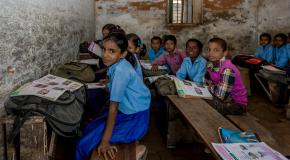Transformation of New Zealand's early childhood services began 26 years ago, when childcare and preschool education, such as kindergartens (for three- and four-year-old children), were integrated under one Ministry of Education. From 1990 there was a unified funding system although it took until the 2000s before education and care centres (childcare) and kindergartens were funded at the same rates. All ECE services receive a funding subsidy for up to 30 hours a week for every child, from birth until the age of five. All three-and four-year-old children can access 20 hours of free ECE.
New Zealand recognised that qualified teachers were the key to quality provision and preschool success, says Helen May, a professor at the University of Otago's College of Education. It set out to train early childhood professionals in universities, just like their primary and secondary school colleagues. All centres receive additional funding related to the number of qualified teachers they employ: the higher the number of teachers, the greater the funding. Due to financial constraints the government has recently reduced its target of 100% qualified staff in all early childhood centres to 80%.
New Zealand was also one of the first countries to develop a national curriculum for early childhood education. The Te Whāriki curriculum—translated from Maori as, "A woven mat for all to stand on"—was created in 1996. It is non-prescriptive and there are many possible 'patterns' for enacting Te Whāriki’s fundamental Principle of "empowering children to learn and grow". There is a strong emphasis on 'relationships' and the wider context of family and community. Numerous experts cite this as an exemplar of an inclusive curriculum that honours the unique cultures of its indigenous people as well as the many migrant settlers who now live in New Zealand.




